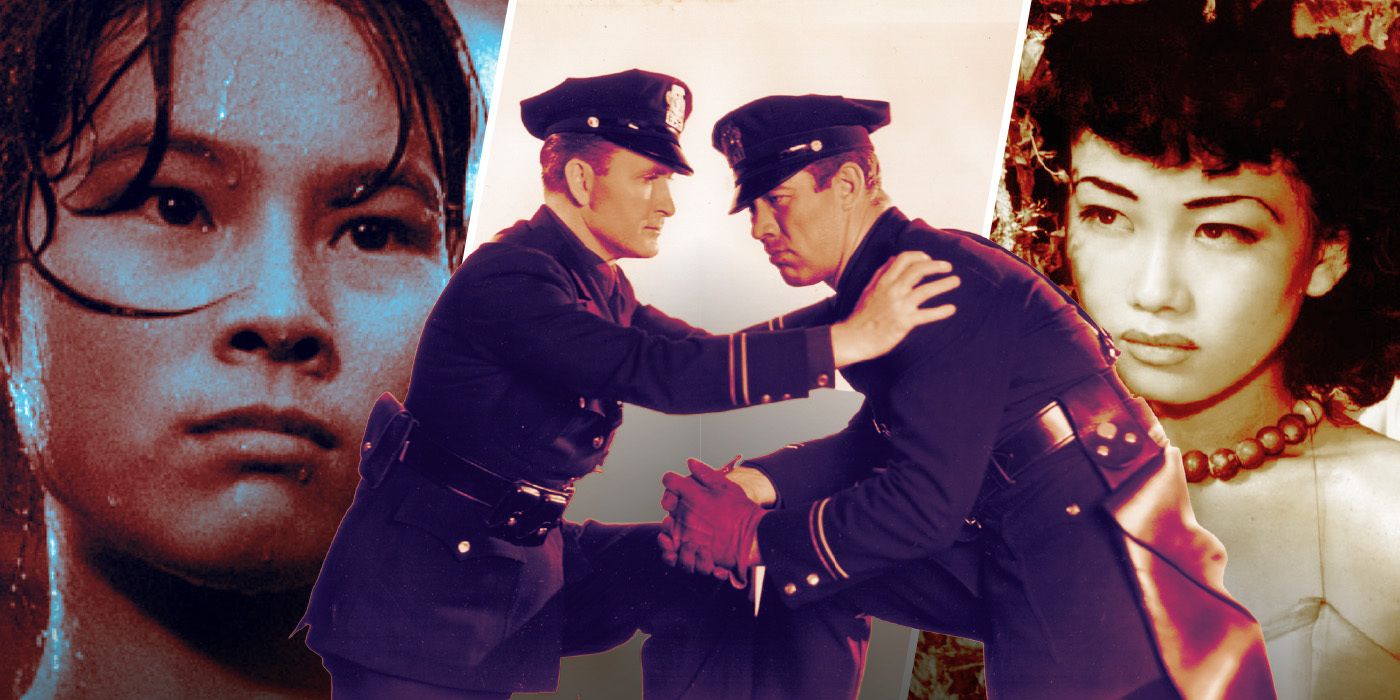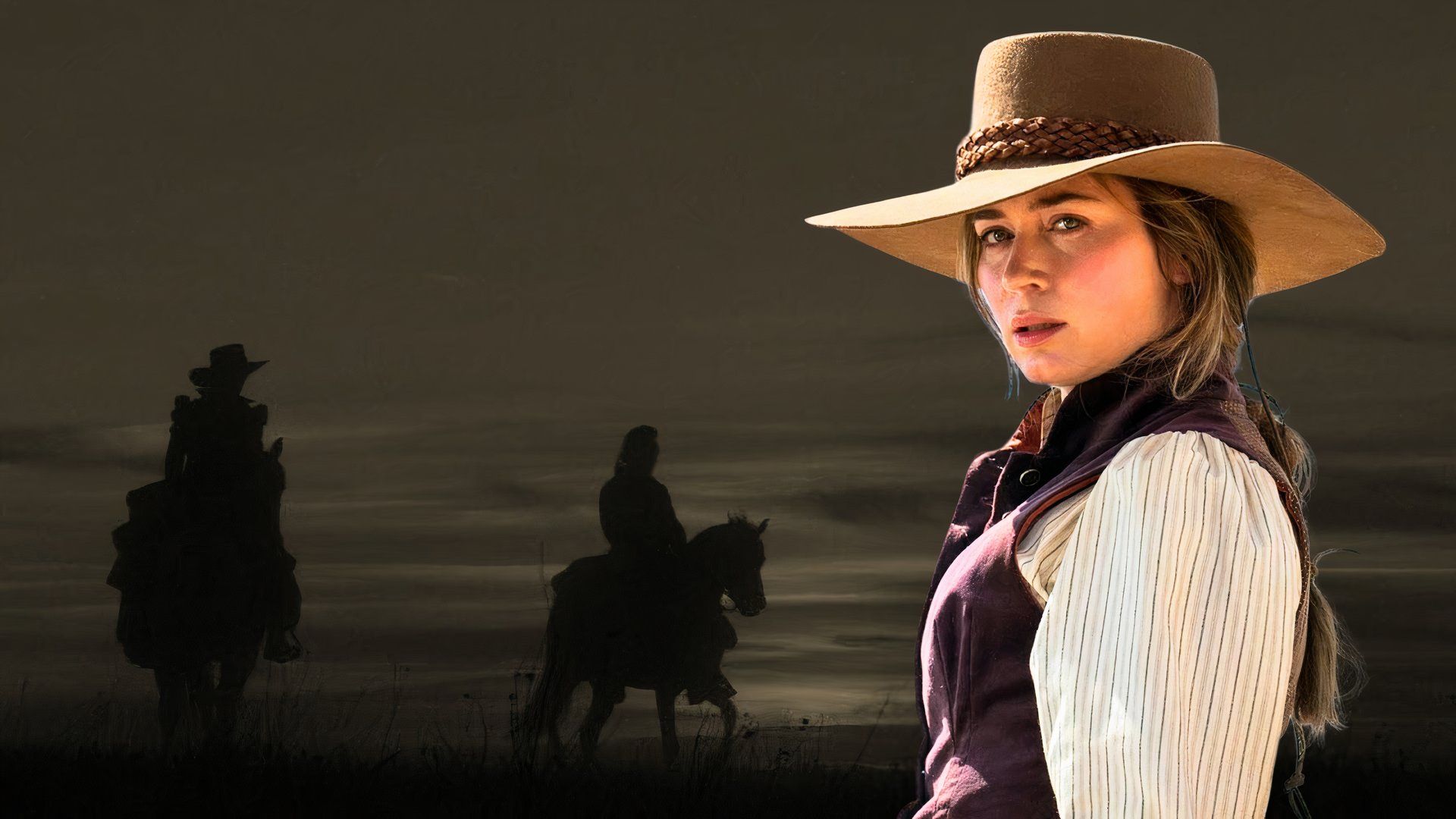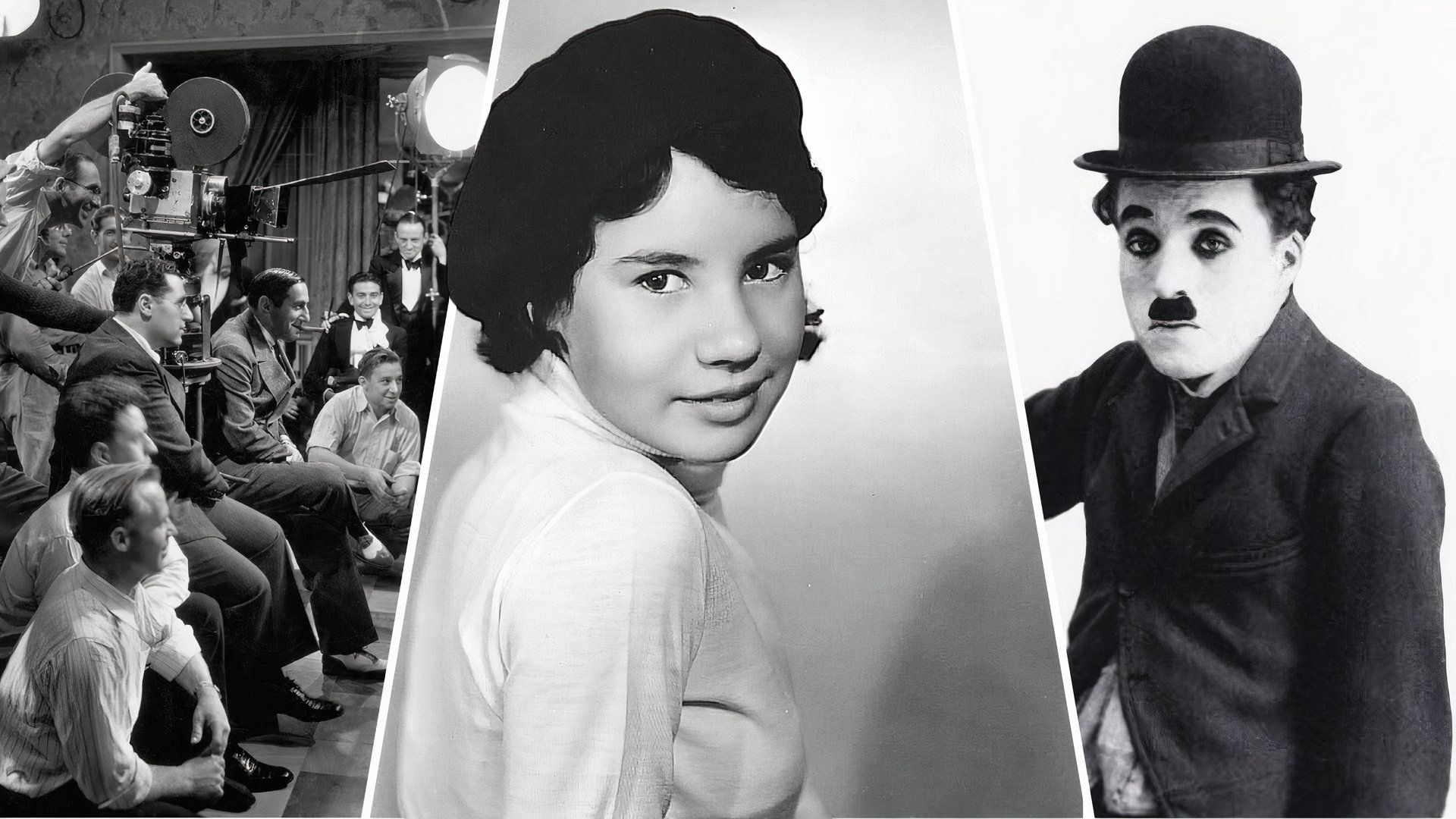While we began witnessing the visual and thematic cues of noir conventions in American films during the 1940s and 1950s, Japanese directors and screenwriters had already crafted their take on the style over decades ago. The classic noir genre often finds its shining light in dark urban landscapes and the shadowy underbellies of cities. The mean streets of Tokyo and neon-lit harbors became the backdrops for these movies.
What makes Japanese noir movies stand out is the esteemed directors’ ability to blend them with Japanese contexts and culture. Whether it is organized crime rings, yakuza gangs, ex-convicts, or obsessed detectives entangled in webs of danger, these stories feel authentic to their roots and deliver everything you expect from the genre. Most of the films on this list are set in post-war Japan, when changing social landscapes engulfed many individuals and led them into mysteries that keep you guessing.
While the cinematography and atmosphere of these movies make you think of American classics, the stories explore Japanese themes around honor, corruption, gang rivalries, and the struggle to find one’s place in a rapidly changing country. So, without much ado, let us take a look at 20 Japanese noir movies filled with twisted thrills, complex characters, jarring plot twists, and a lot of cool aesthetics.
20 That Night’s Wife (1930)
In this early addition to the Japanese film noir canon, we follow Shuji Hashizume, a young man and desperate father who resorts to robbing banks in order to raise some money for his sick daughter’s treatment. However, he has attracted the attention of the Tokyo police, as well as a hard-boiled detective. When Kagawa arrives at Shuji’s apartment, he and his wife nub him.
A Focus on a Trying Time
The economic shock to Japan after the Great Depression was quite severe. In That Night’s Wife, director Yasujirō Ozu showcases the turbulent time with as much mastery as possible. With its tightly wound mystery and vivid character drama, the movie Tokihiko Okada and Chishū Ryū at their career best. Setting the stage for a new genre in Japanese cinema, the movie taps into themes of desperation, isolation, and crime. Stream on The Criterion Channel.
19 The Police Officer (1933)
A rare pre-War film by director Tomu Uchida, The Police Officer, or The Policeman, centers around Itami, a rookie police officer willing to give his everything for the safety of his country. He reunites with Tetsuo Tomioka, a wealthy man and old friend from high school, and soon realizes that Tetsuo is estranged from his father because of his Communist beliefs and involvement in bank robberies.
A Gritty Crime Thriller
The movie offers a gritty depiction of organized crime and the challenges of law enforcement in pre-War Japan. But more than that, Uchida’s portrayal of youth through sweet memories like lying in the grass on a lazy afternoon evokes an engaging and nostalgic feeling. While the cat and mouse game between Eiji Nakano and Isamu Kosugi is the central plot of this crime noir, the director’s understanding of layers, moral ambiguity, and fighting for justice is still relevant.
18 Drunken Angel (1948)
Taking you to the seedy back alleys of postwar Tokyo, Drunken Angel tells the story of Dr. Sanada, who grows increasingly dissatisfied by the rise of tuberculosis and yakuza activity around his run-down clinic. One scarred patient in particular, the violent and alcoholic yakuza Matsunga, captures his concern. In Matsunga’s orbit is Okada, another thug whose influence may cost Matsunga his life.
A Perfect Blend of Neo-Realism and Moral Ambiguity
Drunken Angel was not only Toshiro Mifune’s first collaboration with Akira Kurosawa, but it was also the latter’s directorial breakthrough and a seminal noir film. It deftly blends elements of neo-realism and moral ambiguity while delivering a unique Japanese vision. Kurosawa tries to create a portrait of societal wreckage, which is bridged by human struggles against diseases and dysfunction. Moreover, the film’s focus on character-driven relationships and the lively jazz score really makes it incredible. Stream on The Criterion Channel.
17 Stray Dog (1949)
Another iconic Japanese noir by Kurosawa with Mifune right by his side, Stray Dog is set in post-war Tokyo, where a hot-headed young detective, Murakami, has his pistol stolen from a big pocket. Devastated, he spares no effort to track down the perpetrator. As the investigation continues, he seeks help from a senior detective, Sato, and together the two find deeper truths about the moral decay that afflicts society.
An Early Kurosawa Masterpiece
Like his other films, Kurosawa’s most acclaimed early work, Stray Dog, also weaves a complex web of excellent imagery as well as thick-layered plot lines to show just what modern crime dramas are capable of achieving. The movie also examines social issues and profound truths about systematic failure. Plus, Toshirō Mifun and Takashi Shimura deliver their uncanny characters in a way that makes Stray Dog stand out as a true cinematic masterpiece. Stream on Fubo TV.
16 Crazed Fruit (1956)
Adapted from a novel of the same name by Shintarō Ishihara, Crazed Fruit may have a simple premise, where two brothers, Haruji and Natsuhisa, fall for the same woman, but its treatment at the hands of director Kō Nakahira is what gives it a hallucinatory vibe. The woman in question, Eri, is married and harbors great secrets that not only control the two brothers through romance but also raise conflict between them.
A Memorable Grindhouse Style
A noir film with notes of psychological drama, this one has lush visuals that involve repression, desire, and madness. Considered to be controversial because of its depiction of Japanese youth at the time of its release, Crazed Fruitbecame quite popular and relevant in the later years due to its grindhouse style and sympathetic perspectives. Overall, the movie is an influential one in the crime noir genre. Stream on The Criterion Channel.
15 Black River (1957)
Black River is as much a romance as it is a crime noir. It follows a kind-hearted university student, Nishida, who acquaints himself with a waitress named Shizuko. Despite his attempts to get close to her, he is thrown back three steps because of Joe, a cold-hearted, petty gangster who claims Shizuko as his own. He even gets Nishida’s landlord to evict him and others from the establishment. But eventually, their isolated territory sees the unthinkable.
Unsettling and Ambiguous
Directed by the master of atmospheric crime dramas, Masaki Kobayashi, this movie is as unsettling and ambiguous as it is mesmerizing. The haunting imagery, silent performances, and slow-burn aesthetic keeps viewers spiraling into the narrative, waiting for the final climactic reveal. Additionally, few Japanese crime thrillers take place inside and around military bases, a concept that is ahead of its time and is fascinating to watch. Stream on The Criterion Channel.
14 I Am Waiting (1957)
Just when Hollywood was bidding a precious adieu to crime noir in the late ’50s, Japanese cinema saw a rush of the same for over a decade. I Am Waiting was the feature directorial debut of Koreyoshi Kurahara, and it followed a former boxer named Jōji Shimaki, who is traumatized about being disbarred from the ring. One night, he meets Saeko, a cabaret singer on the run from a yakuza, wanting to end her life. Jōji convinces her to stay, and they build a rusty life together.
An Intense Character Study
An early part of the Nikkatsu film studio’s ripple of Japanese noir films, I Am Waiting is an intense character study that uses stylized conventions of the genre. The movie features tight close-ups and claustrophobic sets to show its characters’ fraying mental states. As authentic and riveting as it can be, the film shocks the audiences by subverting gangster tropes and using the talents of Yujiro Ishihara and Mie Kitahara to their full capacity. Stream on The Criterion Channel.
13 Rusty Knife (1958)
In the postwar town of Udaka, corruption already runs deep. An ex-convict named Yukihiko Tachibana is determined to seek revenge from a crime syndicate for abusing his fiancée to the point of suicide. Meanwhile, the district attorney, Karita tries to arrest the same self-confident thug. Multiple other storylines converge into a mind-blowing finale.
A Bleak Watch
Also starring Yujiro Ishihara and Mie Kitahara in the lead roles, Rusty Knife is an artful and deeply unsettling film about corruption. Director Toshio Masuda showcases Udaka at its bleakest with the help of cinematography, emotion, and dialogue that absorbs viewers. Scenes of intimacy still horrify, but it is the gritty, honest and natural performances that provoke jarring thoughts and desires. Stream on The Criterion Channel.
12 Take Aim at the Police Van (1960)
Take Aim at the Police Van is among the few rare Nikkatsu Noir films made available to the American audience as part of The Criterion Collection, alongside I Am Waiting, Rusty Knife, A Colt Is My Passport, and more. The plot of the movie centers around Daijiro Tamon, a prison guard assigned the task of escorting three convicts. But the night brings an attack and kills two prisoners. Fired from his job, Tamon decides to hunt down the killer and clear his name.
An Invigorating Game of Cat and Mouse
Years ahead of this time, Take Aim at the Police Van takes no time escalating its violence on the volatile streets of Japan. Which is pretty much what makes crime noir so captivating. Taking the unassuming premise of a city-wide hunt and twisting it into a realistic and pulse-pounding game of cat and mouse while the body count rises is an extraordinary idea. That said, this Seijun Suzuki-directed film will probably demand a second viewing for you to completely figure out its mystery. Stream on The Criterion Channel.
11 The Bad Sleep Well (1960)
Drawing inspiration from Shakespeare’s Hamlet, The Bad Sleep Well is among the few Japanese noir films that are studied to understand the genre and the industry. It is an unforgettable collaboration between master filmmaker Akira Kurosawa and the iconic star Toshirō Mifune. Mifune plays Koichi Nishi, a young man who marries the daughter of a corrupt industrialist and gets a job with the same company. Now in a position to expose them, he seeks revenge for his father’s death.
A View of the Japanese Underbelly
Full of suspense and plot twists, this noir dissects the moral rot underneath the veneer of Japan’s economic rise. Kurosawa builds intrigue and deception with the help of a moody aesthetic that places its viewers into the protagonist’s shows. Without saying much, the nuanced performances from Mifune, Masayuki Mori, and Takashi Shimura, and Kyōko Kagawa reveal a broader commentary on the futility of revenge against great institutions. Stream on The Criterion Channel.
10 Intimidation (1960)
Intimidation is a pocket-sized noir film with a runtime of just 65 minutes. It is directed by Koreyoshi Kurahara. The plot, which is genuinely creative, sees a corrupt and desperate bank manager being blackmailed by his timid subordinate because of his faulty books, double dealings, arrogance and denial to promote the latter.
Suspenseful Noir at its Best
Kurahara crafts a taut film that not only delivers a satisfying and disciplined thriller but also examines the relationship between its protagonists, who used to be old schoolmates. The director’s ability to pack suspense and emotion into the same frame using closeup shots and pervasive psychological distrust is what makes Intimidation stand out as an unforgettable landmark in 1960s Japanese New Wave cinema. Stream on The Criterion Channel.
9 Zero Focus (1961)
Gaining heavy influence from Western cinema, particularly Alfred Hitchcock’s Vertigo, this female-led suspenseful noir is truly one of a kind. Its story revolves around Teiko Uhara, whose husband leaves for a business trip a week after their marriage and doesn’t return. She takes it upon herself to find him. Following clues and the wealthy, she uncovers secrets darker and larger than anything she can handle.
A Tense Thriller
Arriving during a time when Japanese cinema was redefining itself in terms of visual grandeur and exploration of character drama, Zero Focus is a tense thriller. Director Yoshitarō Nomura relies on unsteady camera work and suffocating sequences to dive into Teiko’s mental state. She’s played by Yoshiko Kuga, whose gripping persona and touching performance have been felt in several Kurosawa films as well. Stream on The Criterion Channel.
8 Pigs and Battleships (1961)
Capturing another dazzling story set in postwar Japan, Pigs and Battleships follows Kinta, a young lad looking for occupation. He starts working for the local Yakuza crime boss, who wishes to expand his pork distribution business and puts Kinta in charge of raising two pigs on a farm. However, with the police hot on the yakuza’s heel, it is Kinta who stays on the forefront of the fall. Plus, with his girlfriend traded to the Americans, there is no way to get his old life back.
Emotional and Angry
With a focus on realistic locales and urban poverty, director Shōhei Imamura weaves a take that is as unflinching as it is emotional. The performances of Hiroyuki Nagato and Jitsuko Yoshimura are worth all the praise because they showcase an image of anger and desperation. Moreover, Pigs and Battleships is also a biting satire that skewers cultural imperialism and the nihilism left in its wake. Stream on The Criterion Channel.
7 High and Low (1963)
Also directed by Akira Kurosawa, High and Low paints a Tokyo that’s prosperous. Its protagonist is a wealthy businessman named Kingo Gondo, who may seem deceptively simple on the outside but is willing to take extreme measures to get what he wants. Which, in this case, is a company called National Shoes. But when his driver’s son gets kidnapped, he’s forced to choose between the deal and paying a hefty ransom to the kidnappers.
Themes of Morality, Privilege, and Social Responsibility
Fast-paced and incredibly engrossing, this neo-noir explores themes of morality, privilege and social responsibility. Kurosawa takes inspiration from the 1959 novel King’s Ransom by Ed McBain and infuses it with his iconic visuals, flawed characters, and breathtaking plot twists. Toshirō Mifune returns as the main character and Tatsuya Nakadai is the inspector covering the case. Regarded as one of the greatest crime noir films ever made, High and Low is a true classic. Stream on Max.
6 Pale Flower (1964)
In the seedy gambling dens of 1960s Tokyo, seasoned gangster Muraki returns after serving time in prison for a few years. His interest is piqued by the mysterious beauty in the underground scene – the aloof and intriguing Saeko. As the two grow closer, Muraki learns just how desperate Saeko is to dive into the clandestine world of high-stakes yakuza games and how her destructive needs could mean the end for him.
A Fascinating and Obsessive Noir
Pale Flower is directed by Masahiro Shinoda, whose filmography is filled with movies in multiple genres. But there’s something distinctly alluring about this one, starring Ryō Ikebe and Mariko Kaga. Stripping back noir conventions to their core, the movie is known for its space and silence, gaze and gesture, and the ultimate question about where fascination ends and obsession begins. Plus, Ryō and Mariko’s characters share this platonic codependency that’s hard to look away from. Stream on The Criterion Channel.
5 Cruel Gun Story (1964)
Back in the 1960s, Joe Shishido was kind of a royalty in the Japanese crime noir genre. And it wouldn’t be fair to narrow down a list of gangster films and not include a bunch of titles starring Shishido. In Cruel Gun Story, the actor plays the role of a recently released convict named Togawa who is hired to hijack an armored car carrying 127 million yen in racetrack proceeds. Naturally, it does not turn out to be an easy feat.
A Wild Gangster Film
Takumi Furukawa does nothing unusual or noteworthy to make Cruel Gun Story so compelling. The shots are marvelous, and the characters are genuinely riveting, with Shishido’s Togawa also revealing a personal motive that would aid his disabled sister. Which means the movie really thrives in its physical fragility and the ability to use its minimalist style and elevate the plot into one that remains worth revisiting even sixty years later. Stream on The Criterion Channel.
4 A Fugitive from the Past (1965)
Taking place in 1947, A Fugitive from the Past intertwines the stories of three figures. The first is Inukai, a former murderer who successfully fled from Hokkaido to Tokyo and is living a clean life as a businessman under the identity of Tarumi. The second is Yae, a sex worker who recognizes Inukai because of a shared past. And the third is detective Ajimura, who suspects Inukai of a recent crime and is hot on his heels.
A Character-Driven Crime Drama
This Toei Studios’ thriller establishes director Tomu Uchida as a master of gritty, character-driven crime drama once again after his rise to fame in the 1920s. Not only does the movie revel in its suspenseful, edge-of-your-seat tension, but it also offers a strange and empathetic portrayal of its characters as they grapple with national and social change. The grainy 16mm cinematography paired with outstanding performances by Rentarō Mikuni, Sachiko Hidari, and Ken Takakura make it a hit. Rent on Apple TV.
3 A Colt Is My Passport (1967)
In A Colt Is My Passport, Joe Shishido stars as a contract killer named Shuji Kamimura. He is hired by a yakuza to carry out a hit. To the fancy hitman, this is just another contract, and he arrives in Japan to locate and eliminate his target. What he’s unaware of, however, is that this routine job will prove more complicated than ever and put him in a dangerous stand-off with two greedy rival clans.
Cool and Charismatic
The movie represents a massively tense period between American and Japanese noir, and, for that alone, it is worth watching. What’s more interesting about this lean and mean machine of a crime thriller are the leads, Shishido and Jerry Fujio, who bring both charisma and cool to the perfectly styled plot. The movie is also drenched in neon, has a beautiful pace, and has the kind of violence and plot twists you’ve never seen before. Stream on The Criterion Channel.
2 Branded to Kill (1967)
Possibly the only Japanese noir film to generate a copious amount of controversy before and after its release, Branded to Kill was dismissed by Nikkatsu as one of the “movies that make no sense and no money.” Fortunately for us, it has been appreciated as a masterpiece by the new generation. Its plot, nothing extraordinary, follows a third-ranked assassin who messes up his latest job and becomes the target of a formidable killer.
Seijun Suzuki’s Most Absurd Film
Director Seijun Suzuki took the noir formula to its most absurd, anarchic heights here. Which is probably why Nikkatsu fired him. But it is the entrancing and surreal cinematography, provocative dialogue, and a non-linear plot that got audiences adrift and addicted to this unique experience of a film. Although extremely convoluted, it is a relief that Suzuki had a clear picture. “He tries to become No. 1,” said Suzuki while explaining the plot of Branded to Kill, “but ultimately he fails. That’s the story.” Stream on The Criterion Channel.
1 The Wolves (1971)
Set against the backdrop of a massive regime change in Japan during the late 1920s, The Wolves centers around a mobster named Seiji Iwahashi, who is arrested during a violent battle. After his release, he has a hard time adjusting to the fact that his gang has merged with the rival gang and the criminal code they followed has been abolished by law. In his determination to assert himself to the new yakuza leader, Iwahashi faces mistrust.
A Mysterious and Entertaining Must-Watch
Under the masterful direction of Hideo Gosha, The Wolves transforms itself into an epic juxtaposition of noir and yakuza. He brings sensitivity, pathos, and complexity even to the most unsavory characters. Its densely plotted narrative and artful edge appealed to the critics, with one calling it a “mysterious and esoteric entertainment for someone coming upon the genre for the first time.”



